ProEdge Design System
Education, Technology
Transforming product development through systematic design leadership
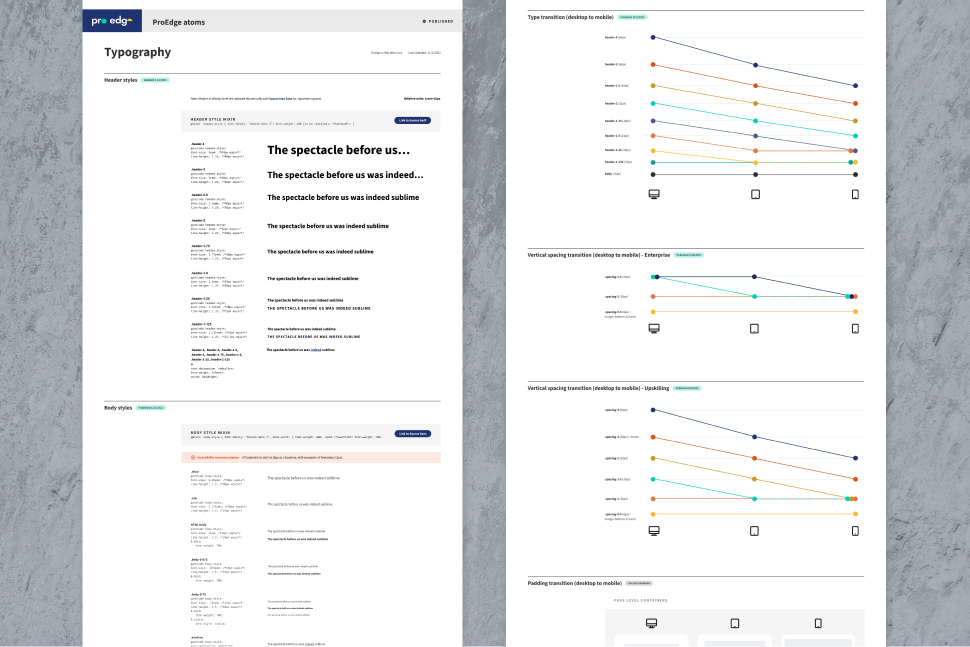
ROLE: Creative Director, UX, Design Operations Lead, Design System Architect, Cross-functional Design Evangelist, UX Governance & Standards Owner
METHODS: Design System Development, Atomic Design Methodology, Cross-Functional Collaboration
TOOLS: Figma
TEAM: ProEdge UX Design and Product teams
Business challenge
PwC’s enterprise learning platform, ProEdge, suffered from inconsistent experiences across its “Learn” (consumer) and “Plan” (administrator) environments. Teams operated in silos, visual language varied across products, and disconnected codebases created redundant work and long design cycles. These inefficiencies slowed the platform’s ability to scale, reduced UX quality, and complicated development handoffs, impacting both time-to-market and product cohesion in a competitive B2B learning space.
Goal
To restore product cohesion and delivery efficiency, I defined a measurable transformation target: Reduce design and development cycle time by 40–50% while increasing platform-wide experience consistency by at least 60%.
This goal set the tone for a systems-driven, operations-focused redesign—anchoring leadership alignment and giving teams a clear performance benchmark.
My role & leadership
As Creative Director, UX, I recognized that the core problem wasn’t just inconsistent UI; it was the lack of shared principles, systems, and processes guiding how teams worked. I secured buy-in to lead a full design transformation initiative that extended beyond the original project scope.
I championed atomic design methodology across product, engineering, and leadership teams, educating stakeholders on how a structured design system could reduce complexity, accelerate delivery, and elevate product quality. This advocacy became instrumental in shifting business decisions toward a systems-driven approach, ultimately influencing platform strategy, investment priorities, and the long-term roadmap.
Kind Words on design leadership
Wai is a fantastic leader who has been pivotal in establishing and maturing the ProEdge product. Wai tackled inefficiencies and inconsistencies by launching the Design Acceleration initiative, which aligned with our goals of efficiency, consistency, and accessibility. Wai is great with people, she cares and is passionate about her work. She invested her time across different practice areas to gain consensus and manage change. This leadership reduced design to delivery turnaround time by accelerated product development, and ensured brand consistency across all user touchpoints. Wai's commitment to accessibility has made ProEdge inclusive and compliant with standards.Sheree K
Practice Lead, ProEdge, PwC
Strategic approach
UX audit & system diagnosis
My team conducted a comprehensive audit across design, engineering, and product workflows to pinpoint where inefficiencies originated, highlighting:
- Pattern fragmentation
- Accessibility gaps
- Siloed collaboration
- Redundant design execution
- Inconsistent handoff practices
- Incompatible component variations across codebases
Establishing foundations with Atomic Design principles
I introduced and evangelized atomic design as the foundation for the ProEdge Design System.
Atoms- Standards & guidelines
- Typography, icon, and color tokens
- Shape, spacing, depth, scale, and transitions
- (Dark mode scoped for a future phase)
Molecules
- Controls (buttons, modals, messaging, footers, scrollers)
- Form components (inputs, radios/checkboxes, dropdowns, filters, uploads)
- Collections (tables, accordions, cards, pagination, navigation, charts)
Organisms
- Learn-only modules
- Plan-only modules
- Combined Learn + Plan modules
Page templates
- Learn templates
- Plan templates
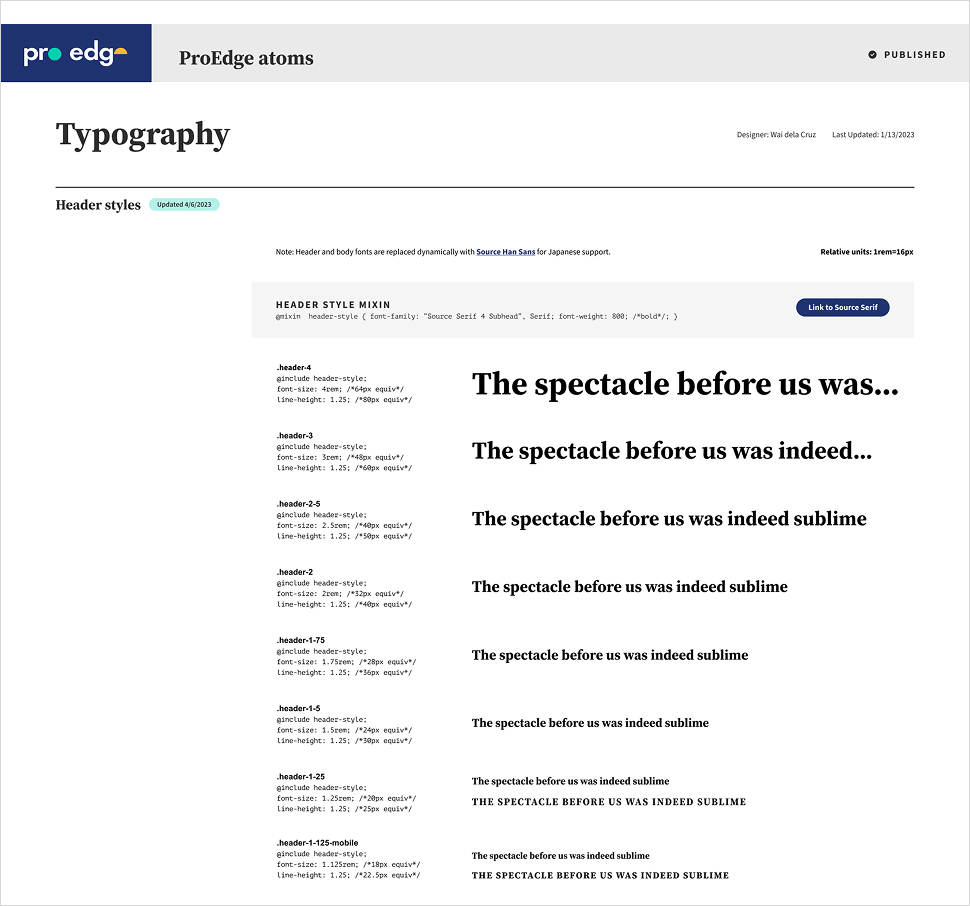

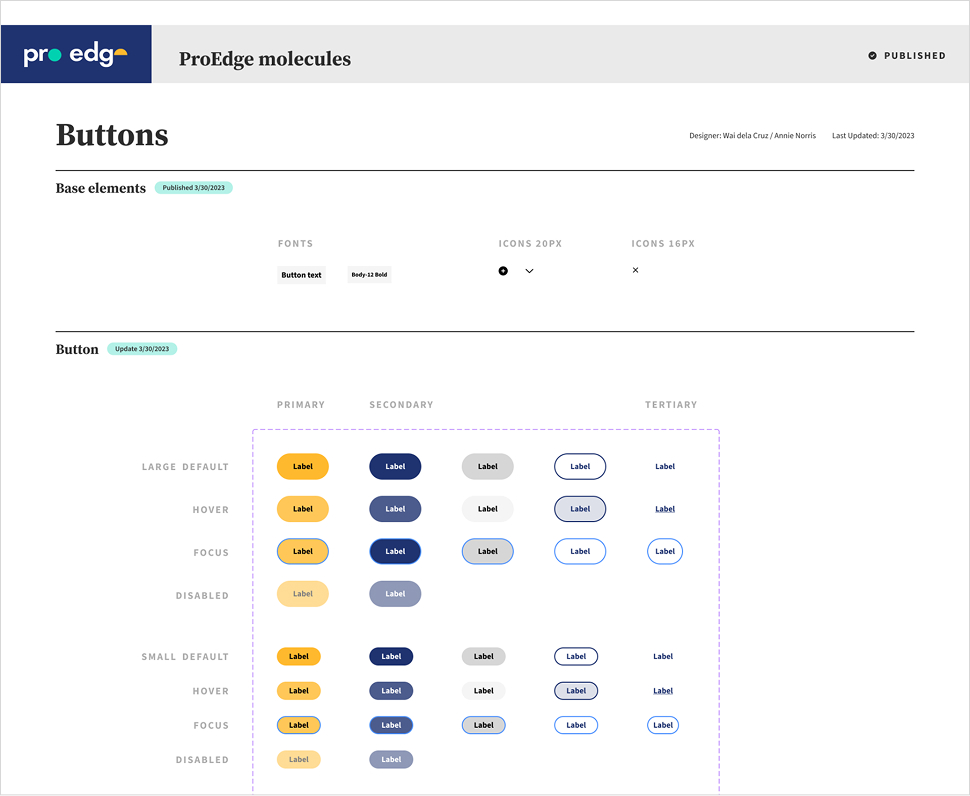
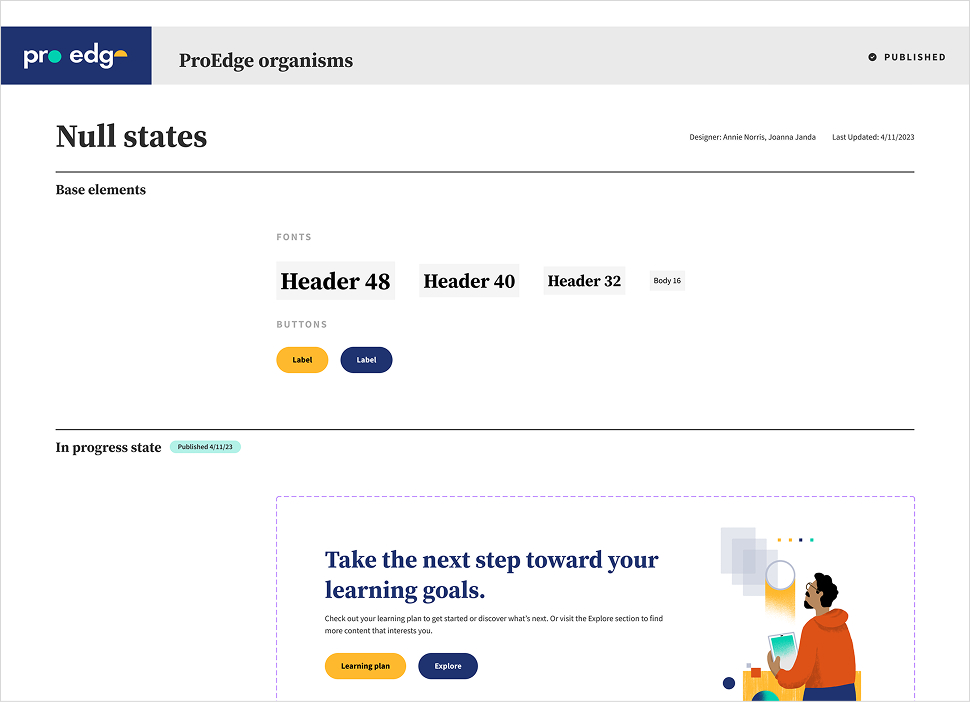
Standards, guidelines & documentation
I established comprehensive documentation to ensure adoption and scalability:
- WCAG 2.1 AA accessibility guidance embedded into every component
- Defined header classes, naming conventions, and header style mixing for developers
- Usage rules, anatomy diagrams, do/don’ts, and platform-specific guidelines

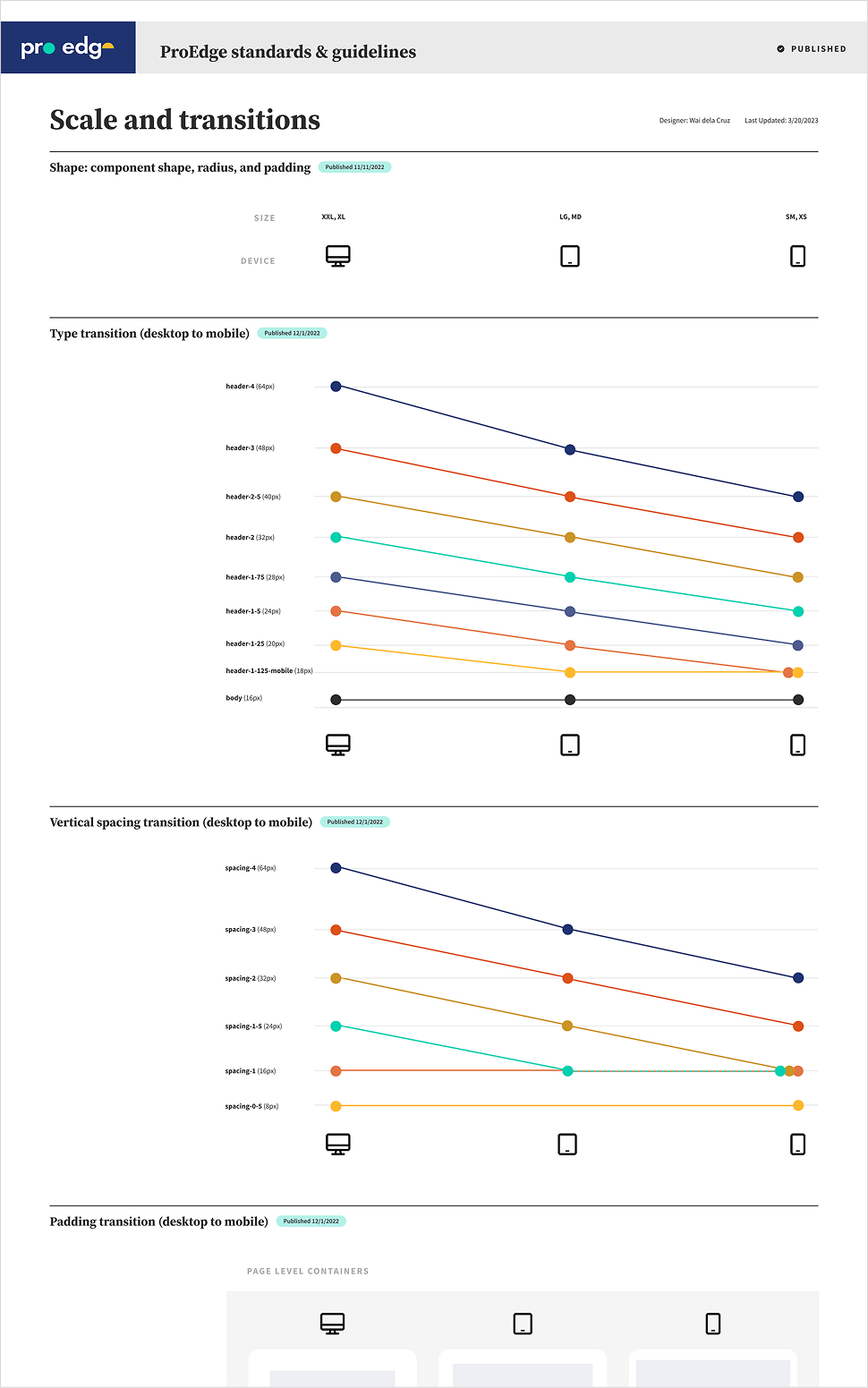
Design system governance & ops model
I established a structured governance framework to ensure accountability, clarity, and continuous improvement across teams. This included:
- Progress labels, designer ownership, and publish status tagging
- Versioning workflows and audit logs
- A Kanban board for design-system sprints (to do, doing, blocked, review, completed)
- Documentation and source-of-truth standards for long-term maintainability
- A formal RACI chart to define who is responsible, accountable, consulted, and informed, ensuring clarity across design, product, and engineering teams
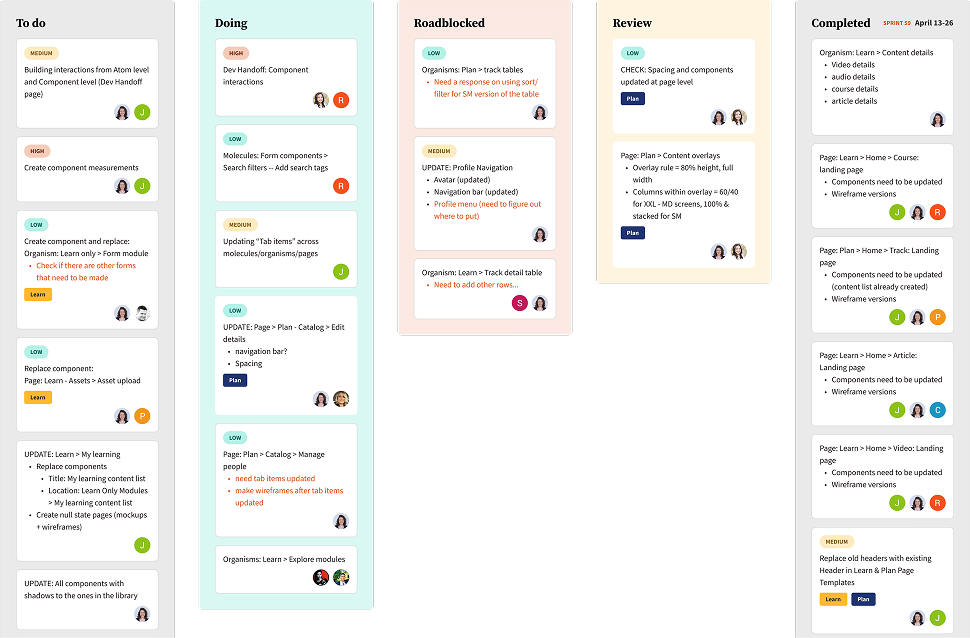
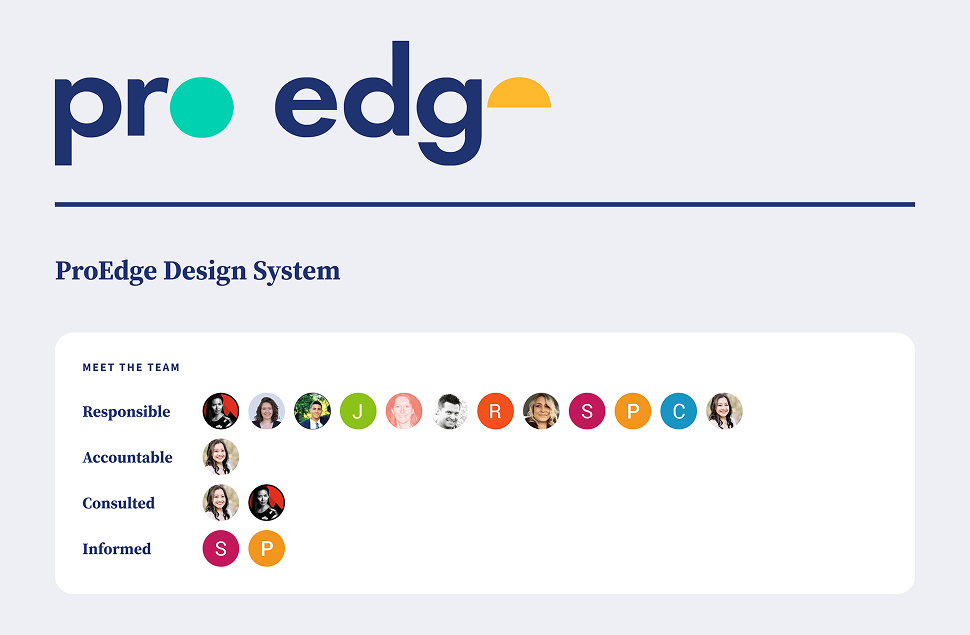
Tooling & process modernization
- Led strategic migration from Adobe XD to Figma
- Introduced low-fidelity exploration to accelerate ideation and reduce rework
- Rebuilt the handoff pipeline for clarity and speed
- Abstracted wireframe and component variants for reusability and alignment
Quantifiable impact
The transformation met, and in several areas exceeded, the original target of reducing design and development cycles by 40–50% while improving platform-wide consistency by more than 60%.
Design & development efficiency
- Achieved a 30–40% reduction in design cycle time through reusable components and standardized patterns.
- Improved development efficiency by 40–50% by reducing implementation variance and lowering technical debt.
Product quality & UX
- Reached full accessibility compliance for all design system components, aligning with WCAG 2.1 AA standards.
- Increased brand consistency across all product touchpoints by 60–70%, validated through platform-wide audits.
Organizational & cross-product scalability
- Enabled teams across the Products & Solutions organization to adopt the same design system methodology and governance processes, extending consistency and accelerating delivery beyond the ProEdge platform
Business value
- Shortened feature delivery timelines and improved time-to-market readiness.
- Strengthened enterprise credibility through a unified system and predictable implementation quality.
- Reduced redundant work, resulting in both time and cost efficiencies across teams.
Team health & scalability
- Reduced cross-team conflicts and misalignment by establishing a shared vocabulary and single source of truth.
- Increased reliance on system documentation, decreasing the need for ad-hoc clarification.
- Improved collaboration between design, product, and engineering through consistent processes and tooling.
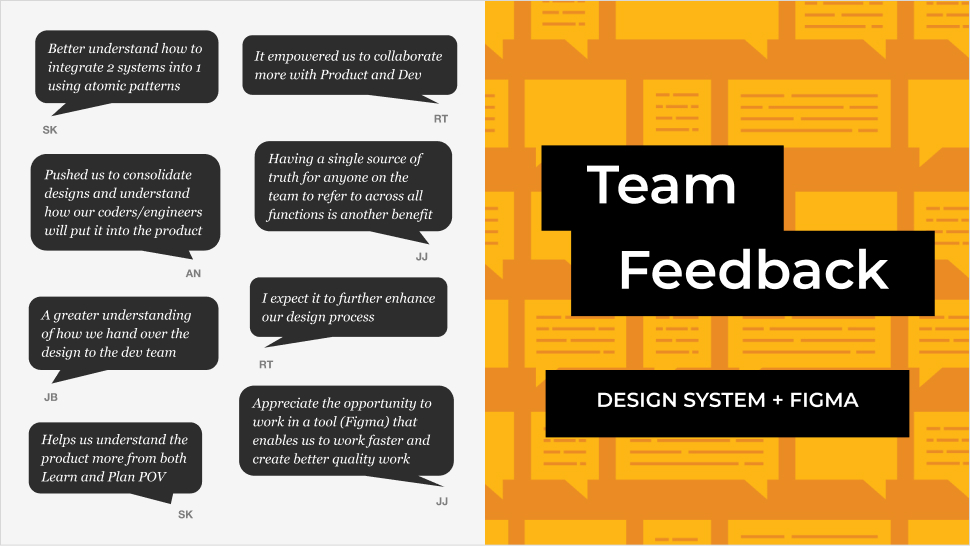
Evangelizing design principles
By advocating for atomic design across all levels—product owners, engineers, and leadership—I demonstrated how systematic thinking drives operational clarity and business agility. This shift influenced platform strategy, resource planning, and prioritization decisions, proving that design principles can meaningfully shape business outcomes.
